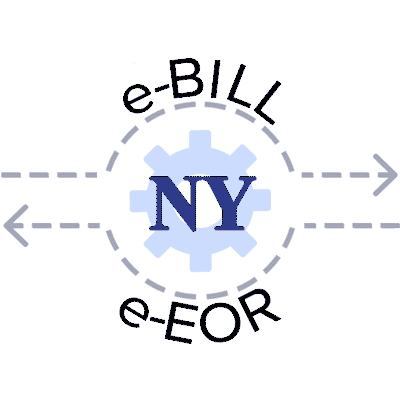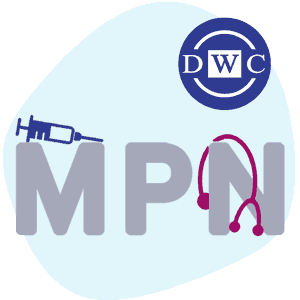NY Data: Payers That Fail to Respond to Providers' e-Bills

Since August 2025, New York has required workers’ comp medical providers to send their workers' comp bills electronically (e-bills).
Since October 2021, the New York Workers’ Compensation Board (WCB) has required payers to send medical providers an electronic Explanation of Review (also known as an Explanation of Benefits) with all the required payment information within 45 days of receiving the e-bill.
However, daisyData shows that New York payers are not always compliant with this EOR requirement.
For e-bills that New York providers submitted via daisyBill from January through July 2025, payers failed to remit a compliant EOR 15% of the time, with non-compliance rates varying from month to month.
This week, daisyBill shared this non-compliance data, including specific non-compliance rates for each payer, with the WCB. Given the WCB’s evident commitment to improving the workers’ comp system by protecting and incentivizing providers, we anticipate the agency will take appropriate action to address this problem.
As California repeatedly demonstrates, a workers’ comp system cannot function if the state fails to enforce compliance by both providers and payers with state laws and regulations.
See daisyData below for details of our New York EOR compliance, including a list of the top 15 payers and their compliance rates.
NY Data: Payers Fail to Remit EORs
The table below features workers’ comp bill data for all New York e-bills that daisyBill providers sent from January 1, 2025, to July 31, 2025. For each month, the table lists:
- The count of workers’ comp e-bills daisyBill providers submitted to claims administrators (also known as “payers” or “carriers”)
- The count of electronic EORs (e-EORs) claims administrators sent to providers in response to providers’ e-bills.
- The count of e-bills where the claims administrator failed to send a compliant e-EOR
- The percentage of e-bills where the claims administrator failed to send a compliant e-EOR
NY e-Bill Submission Month |
Provider e-Bill Count |
Claims Administrator e-EOR Count |
e-EOR Missing Count |
e-EOR Missing % |
Jan 2025 |
334 |
260 |
74 |
22% |
Feb 2025 |
1,976 |
1,657 |
319 |
16% |
Mar 2025 |
2,718 |
2,269 |
449 |
17% |
Apr 2025 |
8,790 |
7,079 |
1,711 |
19% |
May 2025 |
7,421 |
6,592 |
829 |
11% |
Jun 2025 |
6,724 |
6,112 |
612 |
9% |
Jul 2025 |
9,044 |
7,503 |
1,541 |
17% |
Totals |
37,007 |
31,472 |
5,535 |
15% |
Compliance rates fluctuated, sometimes drastically, from month to month. Non-compliance started at 22% in January before reaching a low of 9% in June and escalating to 17% in July.
In total, payers collectively failed to send e-EORs for 5,535 e-bills. For each of those e-bills, the missing e-EOR means either:
- The payer did not reimburse the provider for treating an injured worker, or
- The payer sent a paper EOR, forcing the provider to manually enter the payment information, which is an unconscionable waste of practice time and resources.
The table below lists e-EOR compliance data for our top 15 claims administrators from January 1, 2025, to July 31, 2025. These data demonstrate that the requirement to send e-EORs is not an onerous one, as the following claims administrators comply at least 99% of the time:
- Travelers - 100% compliance
- Gallagher Bassett - 99% compliance
- The Black Car Fund - 99% compliance
- Liberty Mutual - 99% compliance
- Zurich Insurance North America - 99%
Unfortunately, the following three claims administrators seemingly treat WCB payment requirements as optional:
- Sedgwick Claims Management Services, Inc - 89% compliance
- New York City Law Department - 27% compliance
- The Risk Management Planning Group, Inc. - 12 % compliance
Claims Administrator |
Provider e-Bill Count |
e-EOR Count |
e-EOR Missing Count |
e-EOR Missing % |
New York State Insurance Fund |
15,701 |
14,310 |
1,391 |
9% |
Sedgwick Claims Management Services, Inc. |
3,207 |
2,866 |
341 |
11% |
New York City Law Department |
1,787 |
502 |
1,285 |
72% |
Gallagher Bassett Services Inc. |
1,465 |
1,445 |
20 |
1% |
CorVel |
1,396 |
1254 |
142 |
10% |
Travelers |
1,124 |
1,121 |
3 |
0% |
The Black Car Fund |
1,105 |
1097 |
8 |
1% |
PMA Companies |
889 |
873 |
16 |
2% |
The Hartford |
809 |
778 |
31 |
4% |
ESIS, Inc. |
649 |
611 |
38 |
6% |
Liberty Mutual Insurance |
646 |
637 |
9 |
1% |
AmTrust North America, Inc. |
642 |
597 |
45 |
7% |
Chubb Group of Insurance Companies |
523 |
492 |
31 |
6% |
NCA Comp, Inc. |
507 |
493 |
14 |
3% |
Helmsman Management Services LLC |
440 |
426 |
14 |
3% |
The Risk Management Planning Group, Inc. |
396 |
47 |
349 |
88% |
Broadspire Services, Inc. |
383 |
366 |
17 |
4% |
Zurich Insurance North America |
379 |
376 |
3 |
1% |
WCB e-EOR Requirement Is Clear
The requirement for payers to remit e-EORs is indisputable.
In June 2021, WCB Subject Number 046-1452 stated (emphases ours):
“Effective October 1, 2021, payers are required to…Submit an electronic Explanation of Benefits/Explanation of Review…upon adjudication of the associated electronic CMS-1500 medical bills.”
In August 2022, a WCB update stated (emphases ours):
“...one of the requirements for payers is that they must provide the Explanation of Benefits (EOBs) electronically to health care providers identifying the same Claim Adjustment Reason Codes (CARCs) as specified on Notice of Objection to a Payment of a Bill for Treatment Provided (Form C-8.1B) or Notice to Health Care Provider and Claimant of an Insurer's Refusal to Pay All (or a portion) of a Medical Bill Due to Valuation Objection(s) (Form C-8.4) when the associated medical bill was received electronically.”
Finally, the WCB’s CMS-1500 Initiative Prerequisites page states (emphases ours again):
“Workers' compensation payers will electronically transmit Explanation of Benefits/Explanation of Reviews (EOBs/EORs) to their electronic submission partners upon adjudication of the associated electronic CMS-1500 medical bills.”
The Critical Importance of e-EORs
New York’s transition to mandatory workers’ comp e-billing was a bold and necessary step (among several) to improve the overall efficiency of the system. By eliminating paper billing, New York saved providers incalculable time and resources, making it drastically easier for practices to take on workers' comp patients.
For e-billing to accomplish its aims, however, providers and payers must hold up their ends of the transaction.
When a provider receives an e-EOR, the payment information uploads instantly to the e-billing system, documenting and timestamping the transaction and maintaining the data for analytics purposes.
When a payer fails to send an e-EOR, they send the practice back to the 1990s, pulling staff away from other work to perform clerical tasks that became unnecessary decades ago. It’s counterproductive and undermines the WCB’s mission to forge a better system.
Over the last several years, the WCB has displayed a clear and sincere commitment to supporting providers who treat injured workers. We have every reason to believe the agency’s approach to payer non-compliance will reflect that commitment.
daisyBIll is a WCB-approved e-billing partner. Click below to see how we make workers’ comp easier for providers:
DAISYBILL NY COMP BILLING
DaisyBill provides content as an insightful service to its readers and clients. It does not offer legal advice and cannot guarantee the accuracy or suitability of its content for a particular purpose.



.gif)
.png)
.gif)
